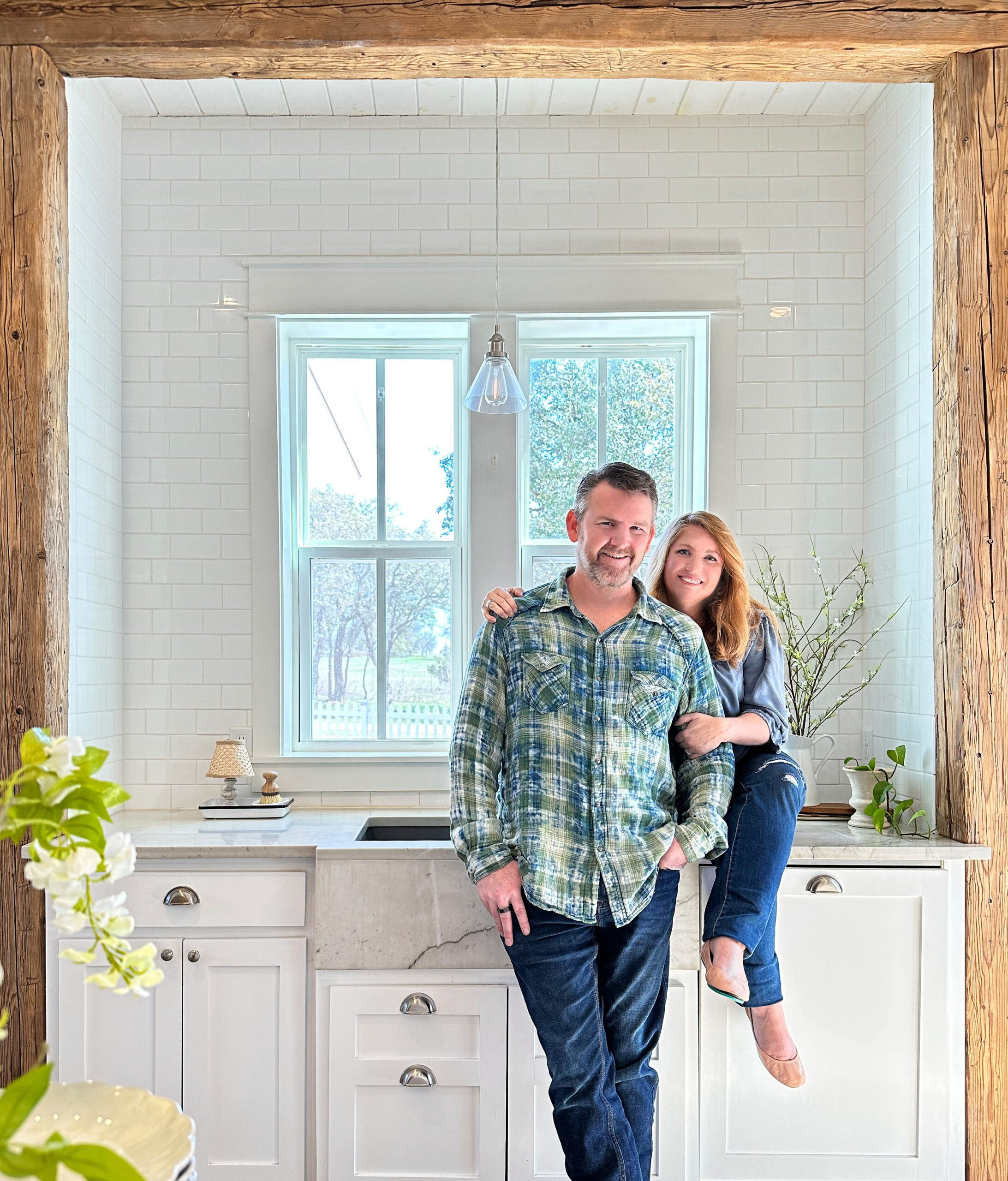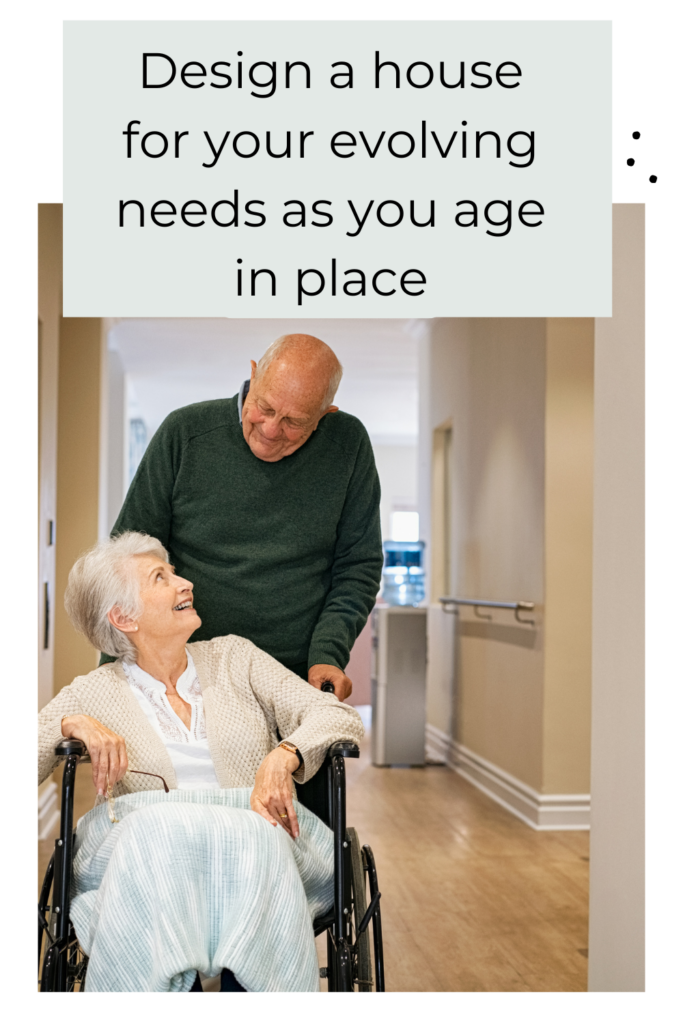
Simple Age-in-Place Design Ideas for your Forever Home
Building a new home can be an exciting time of life! You’re envisioning cozy nights by your new fireplace, family dinners at the kitchen table, and parties spilling out from the living room onto the porch. You can’t wait for all of the new memories you and your family will make in your dream home!
Have you taken a moment to think about how your home will serve you as you age, though? Aging is a natural part of life, and as you age, you’ll notice that your lifestyle will change to match your level of ability.
Your home design can greatly impact your quality of life as you age; why not design your home to allow you to age in place? With a few simple modifications, you can design your home to be a safe, comfortable, and stylish space that will accommodate your changing needs for years to come.
In this blog post, we’ll be exploring some age-in-place home design hacks that will make your forever home a perfect fit for your lifestyle now and in the future. Follow these tips to make sure that your home serves you for your entire life!

Defining Aging In Place and Universal Design
Before we dive in, I think it’s important for you to understand what I mean when I refer to aging in place and universal design.
As we age, certain parts of our lifestyles become harder and harder to maintain. You might struggle to walk up the stairs, bend down, or open certain doors. As these changes occur, many older adults find themselves struggling to maintain their autonomy and independence.
One of the biggest challenges for aging adults is the issue of mobility within their own home. Aging in place refers to the idea of older adults staying comfortably in their own homes as they continue to age, while maintaining a comfortable, high-quality life.
As you go to build your home, how can you ensure that you’ll be able to age in place? The choices you make on your build right now can determine how easily you’ll be able to navigate your home as an older adult.
That’s where universal design comes in! Universal design is the intentional design and composition of an environment so that it can be accessed, understood and used to the greatest extent possible by all people regardless of their age, size, ability or disability.
Universal design not only allows you to age in place, but it turns your home into a comfortable, accessible place for all people. For example, what if your parents need to come live with you as they age? What if an accident occurs, and suddenly you or your spouse have very different levels of ability than before?
I hope and pray that something like that doesn’t happen to you. However, there’s no denying that changes will occur with time as you age. Universal design ensures that your home is comfortable for all people, regardless of whatever life may throw at you.

Benefits of Aging in Place
What’s the big deal with aging in place, though? For starters, aging in place allows you to remain in a familiar and comfortable home environment as you get older. Moving into an assisted living community or retirement home removes you from your home and your family, which can cause stress, anxiety, and even depression. In contrast, aging in place lets you stay happy and comfortable, surrounded by friends, family, and neighbors.
Additionally, aging in place can help preserve your independence. Many older adults struggle with the loss of their autonomy, as their declining health leaves decision-making in the hands of their spouses or kids; remaining in your home as you age gives you more freedom and authority over your own life.
Another benefit of aging in place is the potential for cost savings. Compared to the expenses associated with assisted living facilities or nursing homes, living at home can be more affordable, especially when you take the time beforehand to implement universal design elements into your home.
Trending: Pantry Design and Organization
Design Ideas for Aging in Place
Now that we’ve established how universal design can help you age in place in your home, I’d love to share some ideas with you on how to make your home accessible for people of all ages– whether that’s grandparents, elderly friends, or future you!
You may not want to implement all of these suggestions into your own build, and that’s okay! I encourage you to weigh these options, and then decide what works the best for you and your family.

Wheelchair/Walker Accessibility
Something to consider when making universal design choices in your home is whether or not your home is accessible for wheelchair and walker users.
- Hallways/pathways: Make sure the hallways in your home are at least 42 inches wide, and make sure that all pathways throughout the house have a turning radius of at least 5 feet to allow for easy movement.
- Sinks/counters: Sinks and counters should have plenty of knee space for wheelchair users
- Doorways: Make doorways 32-36” wide to allow wheelchair users to pass through easily
- Transitional spaces: Avoid harsh steps and dropoffs; instead, opt for slopes or level flooring to prevent older adults and wheelchair users from falling.
- Levels: A home following universal design standards would be one story so that no rooms of the house are inaccessible to anyone. If you opt in for a house with more than one story, consider installing a stair lift.
- Flooring: Certain floors are harder to navigate than others. Avoid carpet when possible to make it easier to navigate and easier to clean up spills.

Bathroom Accessibility
One of the most important areas to consider when designing a forever home is the bathroom. The bathroom can be a dangerous place for those with accommodations or limited ability; the wet environment lends itself to slips and falls.
With a few modifications, however, you can create a comfortable and safe space that will meet your needs as you age gracefully. Some important bathroom accessibility items include:
- Grab bars: Put these in strategic locations to make it easier to move around and reduce the risk of falls. If you don’t need grab bars just yet, you can still have blocking installed during the framing stage so that they can easily be added in later. Also, you can find very nice-looking grab bars, so don’t worry too much about your space looking like a public restroom!
- Walk-in shower: Instead of a standard bathtub, think about opting for a large walk-in shower with a bench, which eliminates the need to step over a high ledge and prevents falls while in the shower.
- Toilet: Invest in a raised toilet seat or a toilet with an adjustable height. These features make it easier to sit down and stand up, reducing strain on your joints and muscles. If you’re thinking of installing grab bars or blocking for future grab bars, this is one place I would absolutely recommend having those.
- Shower seat: A shower seat or a built-in bench in your walk-in shower adds convenience and comfort for those who struggle to stand for long periods of time or stay balanced. I prefer a movable teak bench because they not only provide flexibility, but they’re less likely to grow mold than built-in benches.
- Flooring: Choose flooring materials that are slip-resistant, such as textured tiles or non-slip vinyl. This will reduce the risk of accidents, especially in a wet environment like the bathroom.
- Bathroom storage: Opt for open shelves or adjustable cabinets that are easily accessible. This will allow you to keep your toiletries and essentials within reach, without the need to bend or strain.
- Showerhead: Consider adding a handheld showerhead with adjustable height settings for added convenience. This allows you to shower while sitting down or with minimal movement.
- Faucets: A motion-sensor faucet eliminates the need for twisting or turning knobs. Although motion-sensor faucets are the most convenient option for accessibility purposes, faucets with handles are cheaper than motion-sensored sinks and more accessible than faucets with knobs.
- Mirrors: A well-placed mirror at eye level can provide better visibility and help with daily grooming tasks.
- Sinks: Leave plenty of knee space at sinks for wheelchair users and those who might need to sit when washing their hands, brushing their teeth, or getting ready. If you intend on having two sinks in your primary bath, you can have knee space underneath one sink and have the other be a standard sink.
By incorporating these comfortable and safe bathroom features into your age-in-place home, you can create a space that not only meets your needs but also provides a sense of style and luxury.
Kitchen Accessibility
Another important area of your dream home that you’ll want to be accessible to everyone is the kitchen. Not only does the whole family use the kitchen at certain points in their life, but there are many potential obstacles and even hazards to consider when incorporating universal design into your kitchen.
For a kitchen that’s open for everyone, consider the following design options:
- Cabinets: Make sure that your lower cabinets have plenty of storage space. Additionally, implement drawers in your cabinets instead of doors to improve accessibility.
- Oven/stove: Front-mounted controls make the oven and stove easier to use for wheelchair users
- Microwave/dishwasher: As opposed to traditional appliances, consider investing in a microwave or dishwasher drawer. These help people with limited reach and dexterity
- Cabinet hardware: Handles are much easier for people with weakened grip strength to open than knobs, so keep that in mind when picking hardware for your cabinets
- Flooring: The kitchen can get pretty messy! Similar to the bathroom, choose flooring that will prevent slips.
Other Accessibility Considerations
Other than mobility, there are other accessibility considerations to account for when building a home that will suit the needs of you and your family, no matter what happens. These needs include changes in vision, balance, dexterity, and hearing that can occur naturally due to aging.
- Door handles: Knobs can be hard to turn for those experiencing decline in their grip strength. Opt for levers instead, which are easier to turn with the side of the hand or even an elbow.
- Doorbell: Often, old age results in hearing loss. Make sure your doorbell is loud enough for older adults to hear! I personally love how loud this doorbell is– it’s hard to miss!
- Keypad deadbolt: Keypad deadbolts, such as U-Bolt or Ring, can help ensure your safety and peace of mind. Older adults can share the passcode with trusted family members, in case of an emergency.
- Nighttime visibility: Invest in night lights for hallways and bathrooms so that your home is easy to navigate, even at night. If you have young kids, this is perfect for them as well!
- Locks: Instead of a traditional lock and key, think about installing a keypad bolt on your front door. For those struggling with dexterity in their hands, a keypad is much easier to control than a key.
- Switches: Make sure that light switches, fan switches, and other controls are no higher than 42 inches above finished floors to keep them accessible for wheelchair users.

Age In Your Dream Home!
We hope that these suggestions help you create a home that serves everyone who lives in it, no matter their stage of life or circumstances. Keep in mind that while this list is thought-out and thorough, it is NOT exhaustive– there are plenty of creative, fun ways to make sure your home functions to serve you and your family for the rest of your lives!
Age-in-place floor plans
I also have a floor plan created specifically for those who wish to age in place gracefully. Click the link and scroll to the variations listed below the floor plan – click the one that says, “Dogwood Valley – Age in Place” Check it out if you’re interested in making your home functional and comfortable for years to come.
Additionally, our TOC-QS-3091 floor plan has a bedroom and bathroom designed with aging parents in mind.
Want to build your home the smart way?
If you want to see your dream home become a reality, it’s important that you put forth intentional time, effort, and planning into your build. All of the choices you have to make can feel overwhelming, which is why our Bootstrap Builders Program takes you through every step of the process of homebuilding.
